#welland river
Text
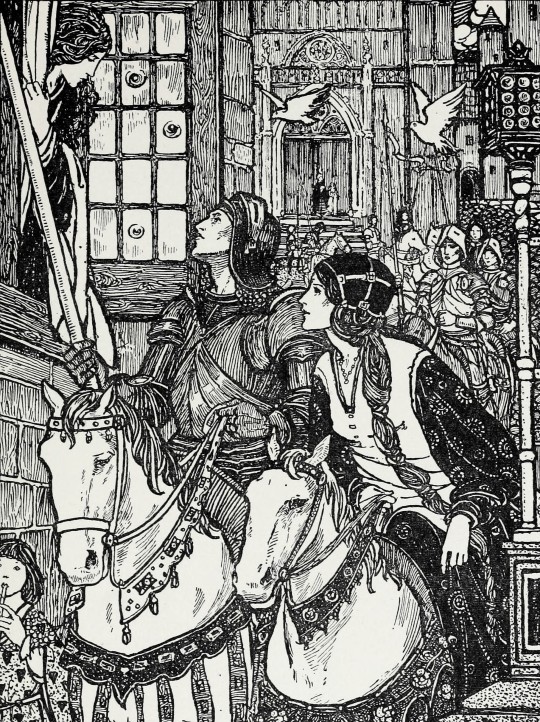
Welland River (1914) - Florence Harrison
#illustration#florence harrison#welland river#early poems of william morris#william morris#1910s#1914#horse#knight
144 notes
·
View notes
Text
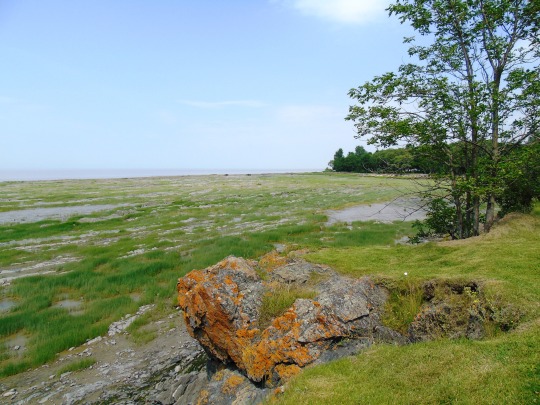

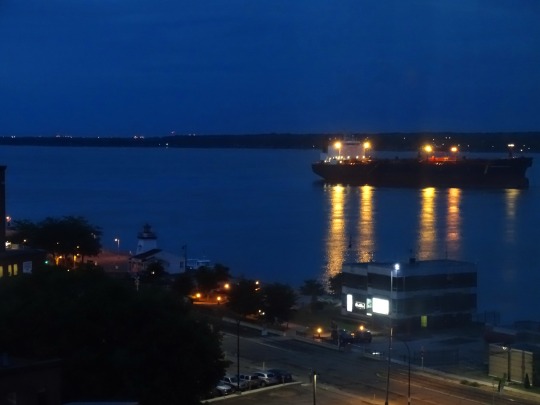

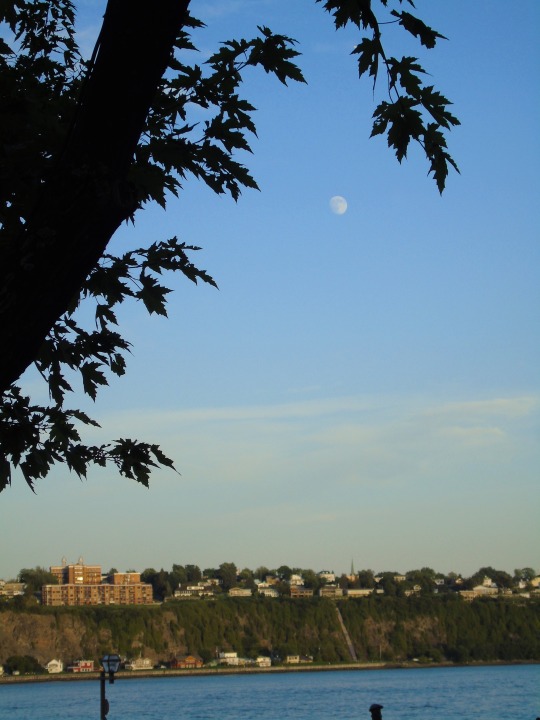




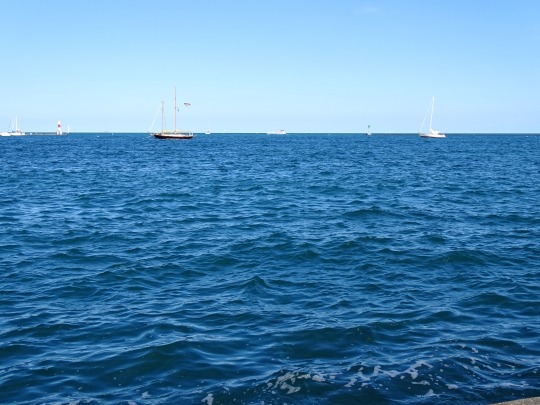
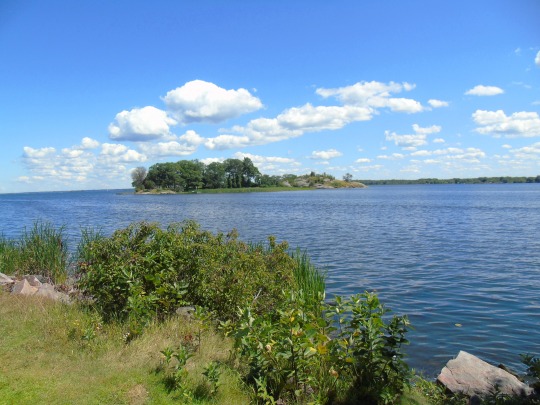
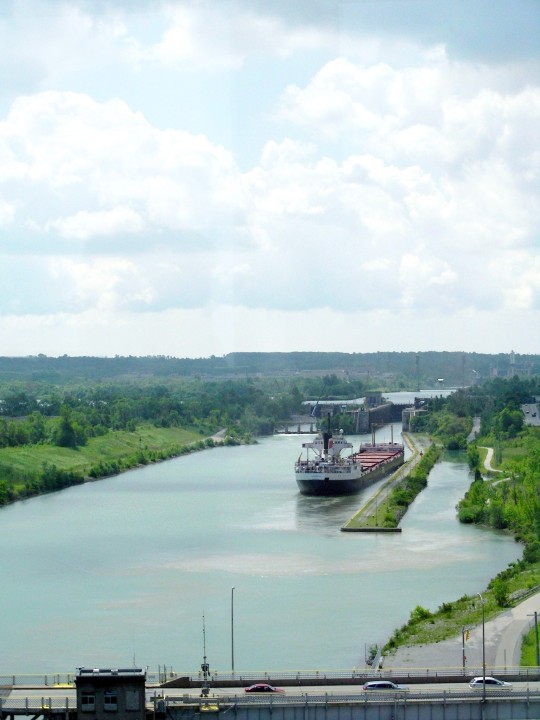
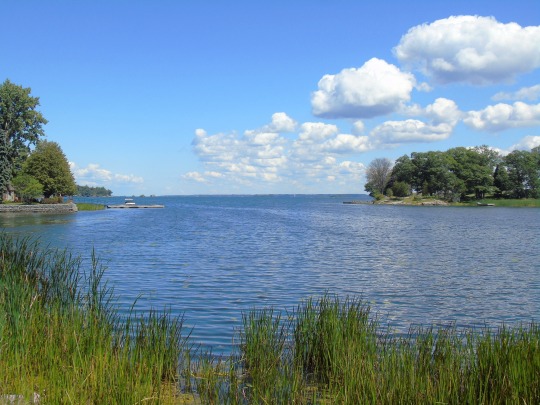
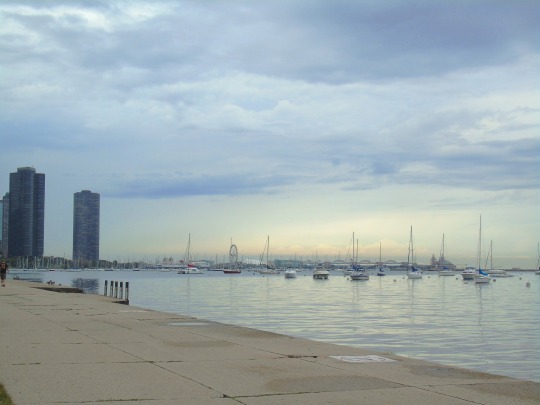

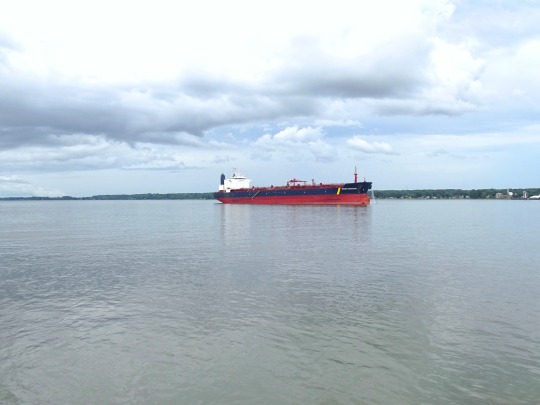


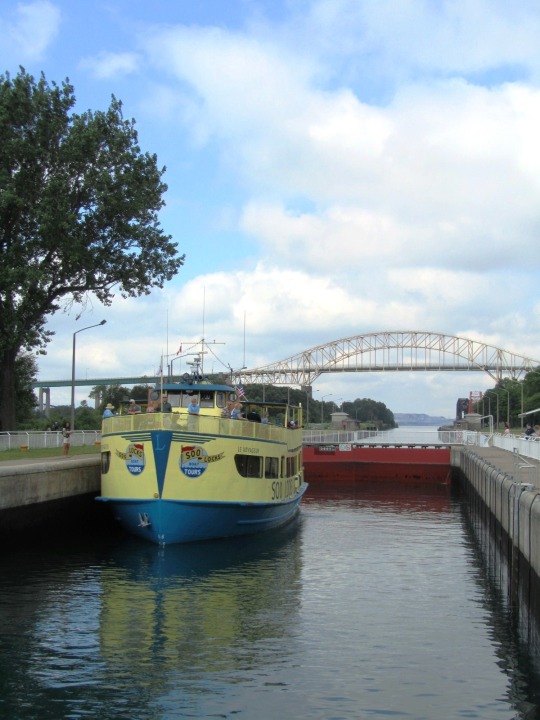

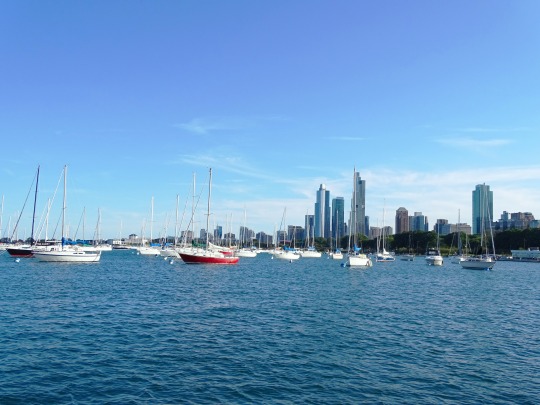

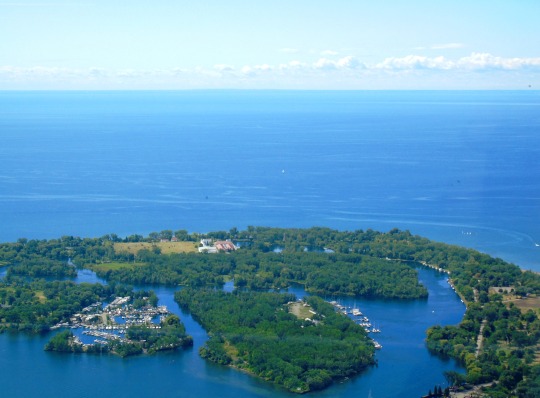






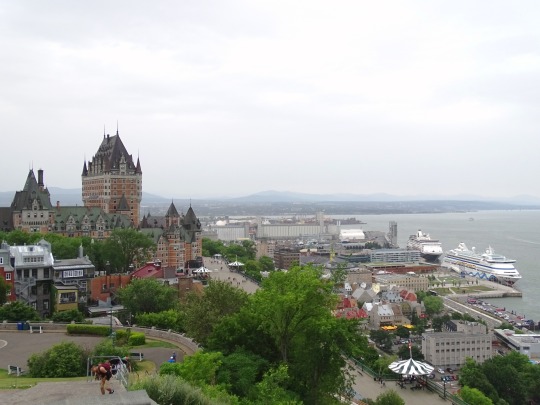
The Saint Lawrence Seaway, linking the North American Great Lakes and the Atlantic Ocean, officially opened to shipping on April 25, 1959.
#Welland Canal#The Sault Ste. Marie Canal National Historic Site#Soo Locks#Lake Ontario#Lake Superior#St. Lawrence River#Toronto#Lake Michigan#Chicago#USA#Thousand Islands National Park#Halte de Sainte-Geneviève-de-Berthier#Québec#Trois-Rivières#Saint Lawrence Seaway#opened#25 April 1959#65th anniversary#US history#Canadian history#original photography#travel#vacation#cityscape#landscape#tourist attraction#architecture#landmark#Prescott
2 notes
·
View notes
Photo
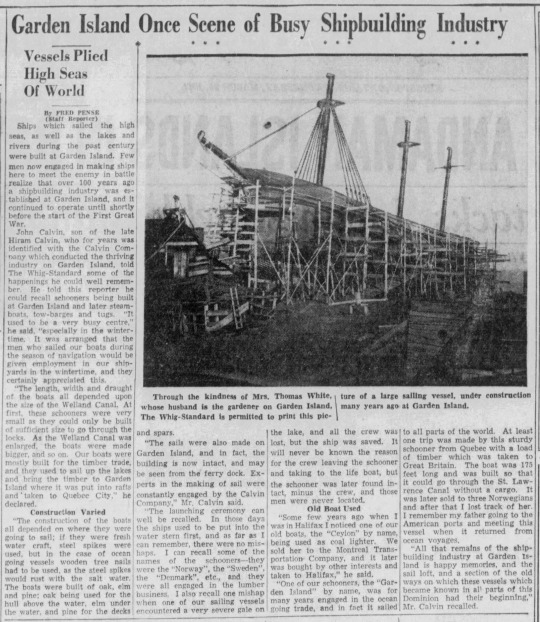
“Garden Island Once Scene of Busy Shipbuilding Industry,” Kingston Whig-Standard. March 25, 1942. Page 2.
----
Garden Island Vessels Plied High Seas Of World
---
By FRED PENSE (Staff Reporter)
Ships which sailed the high seas, as well as the lakes and rivers during the past century, were built at Garden Island. Few men now engaged in making ships here to meet the enemy in battle realize that over 100 years ago a shipbuilding industry was established at Garden Island and it continued to operate until shortly before the start of the First Great War.
John Calvin, son of the late Hiram Calvin, who for years was identified with the Calvin Company, which conducted the thriving industry on Garden Island, told The Whig-Standard some of the happenings he could well remember. He told this reporter he could recall schooners being built at Garden Island and later steamboats, tow-barges and tugs “It used to be a very busy centre," he said, “especially in the wintertime; it was arranged that the men who sailed our boats during the season of navigation would be given employment in our shipyards in the wintertime and they certainly appreciated this.
“The length, width and draught of the boats all depended upon the size of the Welland Canal, At first, these schooners were very small, as they could only be built of sufficient size to go through the locks. As the Welland Canal was enlarged the boats were made bigger and so on Our boats were mostly built for the timber trade and they used to sail up the lakes and bring the timber to Garden Island where it was put into rafts and taken to Quebec City,” he declared.
Construction Varied
“The construction of the boats all depended on where they were going to sail. If they were fresh water craft, steel spikes were used, but in the case of ocean going vessels, wooden tree nails had to be used, as the steel spikes would rust with the salt water. The boats were built of oak elm and pine oak being used for the hull above the water elm under the water and pine for the decks.
“The sails were also made on Garden Island and in fact the building la now intact and may be seen from the’ ferry dock. Experts in the making of sail were constantly engaged by the Calvin Company," Mr Calvin said.
“The launching ceremony can well be recalled, In those days, the ships used to be put Into the water stern first and as far as I can remember, there were no mishaps. I can recall some of the names of the schooners — they were the “Norway,” the “Sweden,” the “Denmark," etc. and they were all engaged in the lumber business. I also recall one mishap when one of our sailing vessels encountered a very severe gale on the lake and all the crew was lost but the ship was saved. It will never be known the reason for the crew leaving the schooner and taking to the life boat, but the schooner was later found intact, minus the crew and those men were never located.
Old Boat Used
“Some few years ago when I was in Halifax, I noticed one of our old boats, the “Ceylon" by name, being used as coal lighter, We sold her to the Montreal Transportation Company and it later was bought by other interests and taken to Halifax,” he said.
“One of our schooners, the “Garden Island” by name was for many years engaged in the ocean going trade and in fact it sailed to all parts of the world. At least one trip was made by this sturdy schooner from Quebec with a load of timber which was taken to Great Britain. The boat was 175 feet long and was built so that it could go through the St. Lawrence Canal without a cargo. It was later sold to three Norwegians and after that I lost track of her. I remember my father going to the American ports and meeting this vessel when it returned from ocean voyages.
“All that remains of the shipbuilding industry at Garden Island is happy memories and the sail loft, and a section of the old ways on which these vessels which became known in all parts of this Dominion had their beginning," Mr. Calvin recalled.
Photo caption:
Through the kindness of Mrs. Thomas White, whose husband is the gardener on Garden Island, The Whig-Standard is permitted to print this picture of a large sailing vessel, under construction many years ago at Garden Island.
#kingston ontario#st. lawrence river#shipbuilders#shipbuilding#shipbuilding company#sailing ships#cargo ships#schooners#welland canal#lachine canal#ville de québec#halifax#montreal#canada during world war 2
3 notes
·
View notes
Text
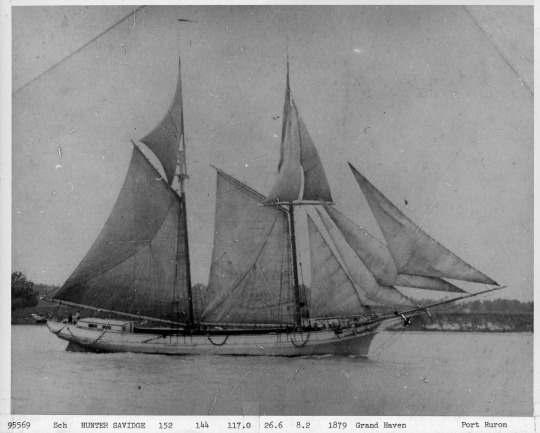
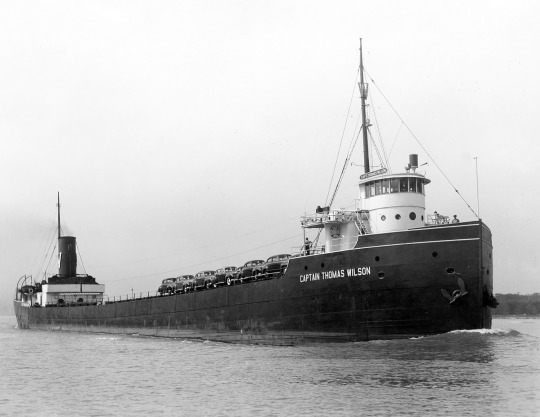
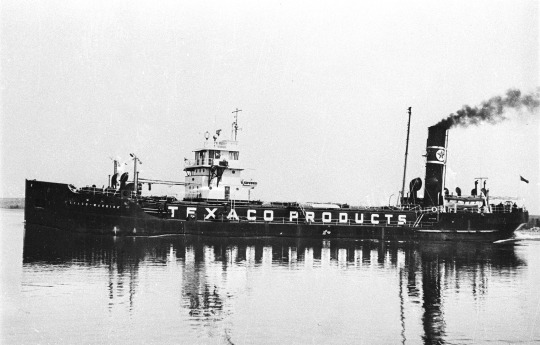

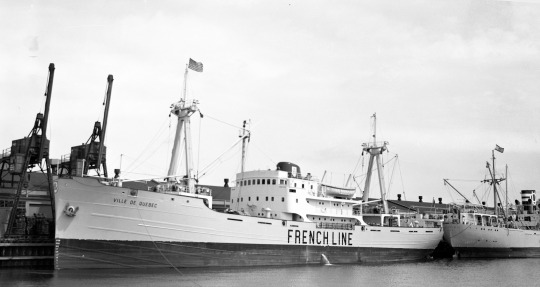
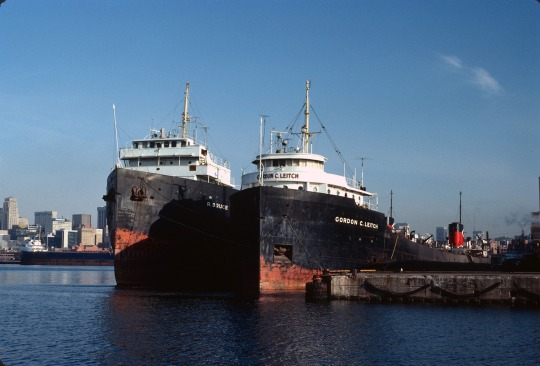
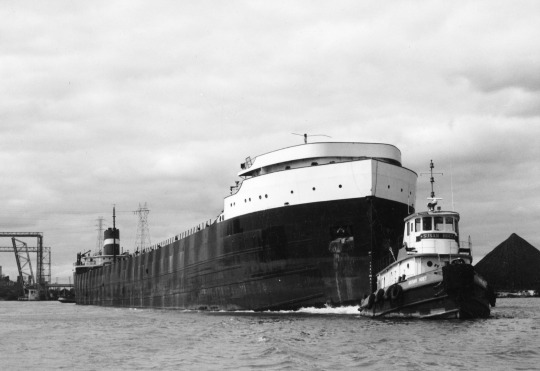
Today in Great Lakes shipping history. August 20th.
1899: The HUNTER SAVIDGE (two-mast wooden schooner, 117 feet, 152 gross tons, built in 1879 at Grand Haven, Michigan) capsized in a squall or tornado in Lake Huron. Five survivors, including Capt. Fred Sharpstein, were rescued from the overturned schooner by the steamer ALEX MCVITTIE. However, five lost their lives, including the captain’s wife and son, the ship’s owner’s wife and daughter, and the mate. Capt. Sharpstein patrolled the beaches looking for the bodies of his wife and son for months, but they were never found. The wreck was found in 1987 near Grindstone City, Michigan.
1900: CAPTAIN THOMAS WILSON was launched at Port Huron for the Wilson Transit Co.
1964: TEXACO WARRIOR hit bottom and settled in the Welland Canal with a punctured tank at Thorold South near Bridge 10. The ship was refloated and resumed service. It was scrapped at Sorel, QC, in 1978
1969: INDUSTRIAL TRANSPORT arrived at Toronto, Ontario, with fuel oil on her maiden voyage.
1969: PETER ROBERTSON, sold for scrap and anchored in western Lake Ontario, dragged her anchors in a storm and landed on the beach near Jordan Harbour, Ontario.
1972: VILLE DE QUEBEC was a Seaway trader on the Great Lakes from 1955 to 1958 and returned inland for three trips in 1959. The ship sank off the coast of Albania due to heavy weather on this date as c) SUZY. It was en route from Durres, Albania, to Patras, Greece. 11 members of the crew were lost, and only seven survived.
1985: R. BRUCE ANGUS, in tandem tow with the ULS steamer GORDON C. LEITCH (i) behind the tug IRVING CEDAR, arrived at Setúbal, Portugal, where they were broken up.
1986: WILLIAM CLAY FORD, departed her lay-up berth at the Rouge slip in tow of Gaelic tugs. She was taken to Detroit Marine Terminals on the Rouge River, where her pilothouse was removed to be displayed at the Dossin Great Lakes Museum on Detroit’s Belle Isle.
9 notes
·
View notes
Text
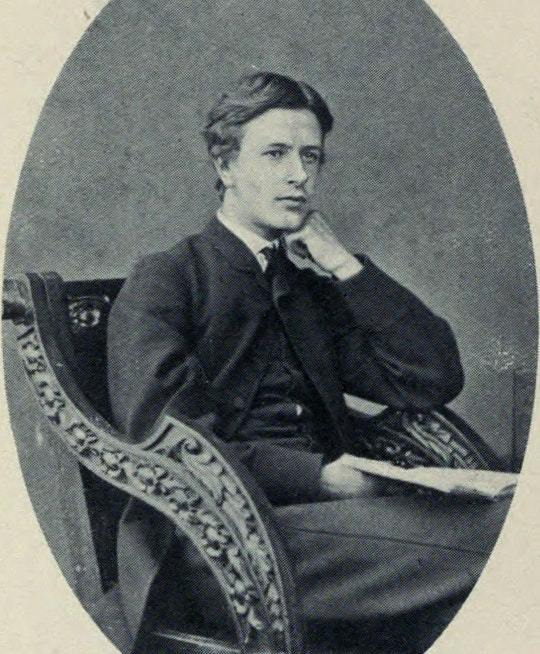
Father Ignatius just keeps giving...
Digby Mackworth Dolben - he of the tragic schoolboy crush genre of poetry - was apparently a novice in Ignatius' order! Digby was so unrepentantly blatant in his obsession with an older boy at school that he was almost kicked out of Eton. (no amount of exclamation marks would be sufficient)
Anyway, he promised his parents he'd try to keep his interest in both boys and Ritualism on the downlow, but wrote to his cousin (Robert Bridges) in Jan 1864:
I am to have an introduction to Brother Ignatius of Claydon!!!
Over the next few months Digby became completely obsessed with Ignatius and the Order - so much so that he didn't want to go back to Eton after Easter break. Ignatius invited him to at least one sleepover at Ascot Priory where he met Pusey and Lydia Sellon during this time, and Digby dutifully went around calling himself Brother Dominic and trying to convert all his friends to the cause. He left Eton at Christmas '64.
In '65, when his tutor was ill, Digby wrote to Robert Bridges' mother and asked if he could come stay for a bit, and learn alongside her younger son and his tutor. She told him absolutely no way because she didn't trust him not to corrupt her son with his papism! Despite his promises to be 'discreet', she wouldn't back down. (All his letters to Robert were still waxing lyrical about Ignatius and the Order, so I guess it wasn't without reason.)
To cheer him up Bridges let him visit at Oxford and introduced Digby to Gerald Manley Hopkins who fell in immediate infatuation. Per Wiki: Hopkins's biographer Robert Bernard Martin asserts that Hopkins's meeting with Dolben, "was, quite simply, the most momentous emotional event of [his] undergraduate years, probably of his entire life". They exchanged letters up to Digby's untimely death and Hopkins wrote poetry for him.
Digby was then sent to Boughrood to prepare for Oxford, and his classmates there remembered him as "a young monk of mediaeval times. … In appearance he was tall and slight, with a complexion of transparent pallor. He had good features, and fine dark melancholy eyes. Do you remember Dore's picture of a young monk sitting in
chapel among a lot of older men, & gazing sadly into vacancy? He was rather like that."
He was still obsessed with Ignatius and the Order, to the point he was travelling to Llanthony Abbey and back in full monkish garb. When he wasn't busy telling everyone he was going to be a monk, he tended to go on about his crush from Eton. Throughout late '66 / early '67 everyone's recollection seems to be of a sad pale lonely young man, not much looking forward to Oxford but determined to see out his promise to his father that he wouldn't become a Catholic until after he graduated...
He drowned on June 28th in the River Welland, presumably after fainting in the water while swimming. Robert Bridges later collected his poetry and published it.
On river banks my love was born,
And cradled 'neath a budding thorn,
Whose flowers never more shall kiss
Lips half so sweet and red as his.
Beneath him lily-islands spread
With broad cool leaves a floating bed:
Around, to meet his opening eyes,
The ripples danced in glad surprise.
I found him there when spring was new,
When winds were soft and skies were blue;
I marvelled not, although he drew
My whole soul to him, for I knew
That he was born to be my king,
And I was only born to sing
With faded lips and feeble lays
His love and beauty all my days...
8 notes
·
View notes
Text
Canada cities
Yukon
Dawson City, Haines Junction, Whitehorse
------------------------------------------------------------------------------
Northwest Territories
Inuvik, Yellowknife
------------------------------------------------------------------------------
Nunavut
Alert Station, Grise Fiord, Resolute Bay, Iqaluit, Rankin Inlet
------------------------------------------------------------------------------
British Columbia
Victoria, Saanich, Saanichton, North Saanich, Nanaimo, Campbell River, Courtenay, Alert Bay, Prince Rupert, Prince George, West Vancouver, North Vancouver, Vancouver, Richmond, Delta, White Rock, New Westminster, Burnaby, Surrey, Coquitlam, Port Coquitlam, Mission, Maple Ridge, Pitt Meadows, Langley, Abbotsford, Chilliwack, Agassiz, South Sumas, Osoyoos, Oliver, Penticton, Kelowna, West Kelowna, Kamloops, Vernon, Salmon Arm, Cranbrook, Whistler
------------------------------------------------------------------------------
Alberta
Fort McMurray, Fort Mackay, Grande Prairie, Edmonton, Spruce Grove, Leduc, Red Deer, Calgary, Okotoks, Cochrane, Airdrie, Banff, Jasper, Lake Louise, Medicine Hat, Lethbridge, Drumheller, Lloydminster
------------------------------------------------------------------------------
Saskatchewan
Lloydminster, Prince Albert, Saskatoon, Regina, Moose Jaw, Swift Current, Weyburn, Estevan, Yorkton, Moosomin
------------------------------------------------------------------------------
Manitoba
Portage la Prairie, Brandon, Winnipeg, Norway House, Thompson, Churchill
------------------------------------------------------------------------------
Ontario
Thunder Bay, Sault Sainte. Marie, Timmins, North Bay, Greater Sudbury, OTTAWA, Nepean, Kanata, Kingston, Cornwall, Peterborough, Kawartha Lakes, Orillia, Barrie, Innisfil, Keswick-Elmhurst Beach, Midland, Orangeville, Newmarket, Oshawa, Ajax, Pickering, Whitby, Cobourg, Courtice, Scarborough, Etobicoke, Toronto, Markham, Vaughan, Richmond Hill, Brampton, Mississauga, Guelph, Kitchener, Brantford, Milton, Cambridge, Waterloo, Oakville, Burlington, Hamilton, Saint Catharines, Welland, Pelham, Niagara Falls, Niagara-on-the-Lake, London, Saint Thomas, Chatham-Kent, Chatham, Kent, Sarnia, Windsor
------------------------------------------------------------------------------
Quebec
Val d'Or, Gatineau, Salaberry-de-Valleyfield, Chateauguay, Mont-Tremblant, Sainte-Therese, Sainte-Catherine, Saint-Jerome, Boisbriand, Brossard, Repentigny, Charlemagne, Terrebonne, Laval, Longueuil, Montreal, Montreal-Est, Dorval, Boucherville, Saint-Jean-sur-Richelieu, Granby, Victoriaville, Beloeil, Saint-Hyacinthe, Drummondville, Saint-Georges, Sherbrooke, Vaudreuil-Dorion, Magog, Sorel-Tracy, Joliette, Shawinigan, Trois-Rivieres, Ville du Quebec (Quebec City), Levis, Saguenay, Rimouski
------------------------------------------------------------------------------
Newfoundland and Labrador
Labrador City, Saint John's, Saint Lawrence, Mount Pearl
------------------------------------------------------------------------------
Nova Scotia
Sydney, Halifax, Yarmouth
------------------------------------------------------------------------------
New Brunswick
Moncton, Fredericton, Saint John, Bathurst
------------------------------------------------------------------------------
Prince Edward Island
Charlottetown, Summerside
------------------------------------------------------------------------------
0 notes
Text
13th November
Stamford Bull Running
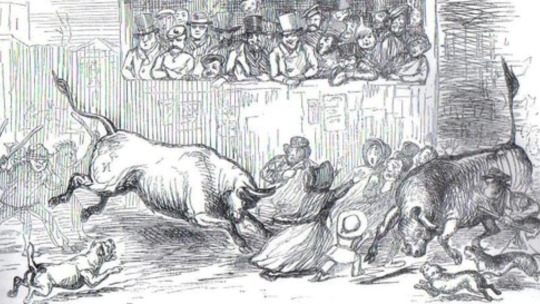
Source: The Lincolnite website
On this day the Stamford Bull Running once took place. Until this exercise in animal cruelty and danger to human life was banned in 1839, every 13th November a bull was hounded through the streets of Stamford in Lincolnshire by the bullards, drivers who risked life, limb and being covered in bull dung by eventually forcing the enraged animal off the bridge and into the River Welland where it usually drowned, before it was hauled out and butchered for a mass collective night feast. The ritual originally began, tradition has it, when William the Earl of Warren observed two rogue bulls devastating his lands and hired local butchers to chase them down, during which one of the animals stampeded through Stamford. There may be truth in this tale, but the event’s accompanying folk songs and the general orgiastic glee on display at the Stamford Bull Run, hint at a darker origin in Martinmas pagan bull sacrifice. The general feel of primitive license and excess associated with the Run was summed up by a bullard’s speech in which he insisted:
‘On this day there is no King in Stamford, we are every one of us high and mighty… a Lord Paramount, a Lord of Misrule, a King of Stamford… We are punishable for no crime but murder, and that only of our own and no other species.’
No mercy for the bull, then.
0 notes
Text

More wildlife on the river Welland. That’s a lot of babies to look after, where’s Dad when you need him?
0 notes
Text
Vyctor Just Had A Magectomy!
Mike and I went for a flight yesterday. We were hoping to fly to Brantford to go to the Aircraft Spruce store, but it’s closed on Saturday’s during the winter. Bummer! So we just did a local flight instead. It’s so neat to see the Welland Canal at such a low water level:
We headed south to Port Colborne and then east to Fort Erie, back north around Niagara Falls then along the Niagara River to…

View On WordPress
0 notes
Photo

Niagara River #niagara #niagarafalls #stcatharines #canada #ontario #toronto #niagaraonthelake #hamilton #niagararegion #welland #hamont #niagarafallscanada #notl #grimsby #travel #burlington #photography #nature #ourhomestc #oakville #realestate #stoneycreek #portcolborne #love #forterie #supportlocal #mississauga #summer #thorold #falls https://www.instagram.com/p/CneZdoWKtBC/?igshid=NGJjMDIxMWI=
#niagara#niagarafalls#stcatharines#canada#ontario#toronto#niagaraonthelake#hamilton#niagararegion#welland#hamont#niagarafallscanada#notl#grimsby#travel#burlington#photography#nature#ourhomestc#oakville#realestate#stoneycreek#portcolborne#love#forterie#supportlocal#mississauga#summer#thorold#falls
0 notes
Text

Welland is a city located in the Niagara Region of Ontario, Canada. It is situated along the Welland River, which flows into Lake Erie. Welland is also home to a number of schools, shopping centres, and restaurants, and is easily accessible by car or public transportation. You can also get in touch with a neighbourhood real estate agent, who can provide you more details on the homes for sale in welland and assist you in locating homes that fit both your needs and your budget. Be sure to take into account elements like the neighbourhood, building's size, age, and condition, as well as any other features or facilities that are significant to you, when searching for a home in Waterdown.
0 notes
Text
Events 11.30
977 – Franco-German war of 978–980: Holy Roman Emperor Otto II lifts the siege at Paris and withdraws. His rearguard is defeated while crossing the Aisne River by West Frankish forces under King Lothair III.
1707 – Queen Anne's War: The second Siege of Pensacola comes to end with the failure of the British Empire and their Creek allies to capture Pensacola, Spanish Florida.
1718 – Great Northern War: King Charles XII of Sweden dies during a siege of the fortress of Fredriksten in Norway.
1782 – American Revolutionary War: Treaty of Paris: In Paris, representatives from the United States and Great Britain sign preliminary peace articles (later formalized as the 1783 Treaty of Paris).
1786 – The Grand Duchy of Tuscany, under Pietro Leopoldo I, becomes the first modern state to abolish the death penalty (later commemorated as Cities for Life Day).
1803 – The Balmis Expedition starts in Spain with the aim of vaccinating millions against smallpox in Spanish America and Philippines.
1803 – In New Orleans, Spanish representatives officially transfer the Louisiana Territory to an official from the French First Republic. Just 20 days later, France transfers the same land to the United States as the Louisiana Purchase.
1804 – The Democratic-Republican-controlled United States Senate begins an impeachment trial of Federalist Supreme Court Justice Samuel Chase.
1829 – First Welland Canal opens for a trial run, five years to the day from the ground breaking.
1853 – Crimean War: Battle of Sinop: The Imperial Russian Navy under Pavel Nakhimov destroys the Ottoman fleet under Osman Pasha at Sinop, a sea port in northern Turkey.
1864 – American Civil War: The Confederate Army of Tennessee suffers heavy losses in an attack on the Union Army of the Ohio in the Battle of Franklin.
1872 – The first-ever international football match takes place at Hamilton Crescent, Glasgow, between Scotland and England.
1900 – A German engineer patents front-wheel drive for automobiles.
1916 – Costa Rica signs the Buenos Aires Convention, a copyright treaty.
1934 – The LNER Class A3 4472 Flying Scotsman becomes the first steam locomotive to be authenticated as reaching 100 mph.
1936 – In London, the Crystal Palace is destroyed by fire.
1939 – World War II: The Soviet Red Army crosses the Finnish border in several places and bomb Helsinki and several other Finnish cities, starting the Winter War.
1940 – World War II: Signing of the Sino-Japanese Treaty of 1940 between the Empire of Japan and the newly formed Wang Jingwei-led Reorganized National Government of the Republic of China. This treaty was considered so unfair to China that it was compared to the Twenty-One Demands.
1941 – The Holocaust: The SS-Einsatzgruppen round up 11,000 Jews from the Riga Ghetto and kill them in the Rumbula massacre.
1942 – World War II: Battle of Tassafaronga; A smaller squadron of Imperial Japanese Navy destroyers led by Raizō Tanaka defeats a U.S. Navy cruiser force under Carleton H. Wright.
1947 – Civil War in Mandatory Palestine begins, leading up to the creation of the State of Israel and the 1948 Arab–Israeli War.
1953 – Edward Mutesa II, the kabaka (king) of Buganda is deposed and exiled to London by Sir Andrew Cohen, Governor of Uganda.
1954 – In Sylacauga, Alabama, United States, the Hodges meteorite crashes through a roof and hits a woman taking an afternoon nap; this is the only documented case in the Western Hemisphere of a human being hit by a rock from space.
1966 – Decolonization: Barbados becomes independent from the United Kingdom.
1967 – Decolonization: South Yemen becomes independent from the United Kingdom.
1967 – The Pakistan Peoples Party is founded by Zulfikar Ali Bhutto, who becomes its first chairman.
1967 – Pro-Soviet communists in the Philippines establish Malayang Pagkakaisa ng Kabataan Pilipino as its new youth wing.
1971 – Iran seizes the Greater and Lesser Tunbs from the Emirates of Sharjah and Ras Al Khaimah.
1972 – Vietnam War: White House Press Secretary Ron Ziegler tells the press that there will be no more public announcements concerning American troop withdrawals from Vietnam because troop levels are now down to 27,000.
1981 – Cold War: In Geneva, representatives from the United States and the Soviet Union begin to negotiate intermediate-range nuclear weapon reductions in Europe. (The meetings end inconclusively on December 17.)
1982 – Michael Jackson's sixth solo studio album, Thriller, is released worldwide, ultimately becoming the best-selling record album in history.
1994 – MS Achille Lauro catches fire off the coast of Somalia.
1995 – Official end of Operation Desert Storm.
1995 – U.S. President Bill Clinton visits Northern Ireland and speaks in favor of the "Northern Ireland peace process" to a huge rally at Belfast City Hall; he calls IRA fighters "yesterday's men".
1999 – Exxon and Mobil sign a US$73.7 billion agreement to merge, thus creating ExxonMobil, the world's largest company.
1999 – In Seattle, United States, demonstrations against a World Trade Organization meeting by anti-globalization protesters catch police unprepared and force the cancellation of opening ceremonies.
1999 – British Aerospace and Marconi Electronic Systems merge to form BAE Systems, Europe's largest defense contractor and the fourth largest aerospace firm in the world.
2000 – NASA launches STS-97, the 101st Space Shuttle mission.
2001 – Gary Ridgway is apprehended and charged with four murders. He was eventually convicted of a total of 49 murders.
2004 – Lion Air Flight 583 overshoots the runway while landing at Adisumarmo International Airport and crashes, killing 25 people.
2005 – John Sentamu becomes the first black archbishop in the Church of England with his enthronement as the 97th Archbishop of York.
2012 – An Ilyushin Il-76 cargo plane belonging to Aéro-Service, crashes into houses near Maya-Maya Airport during a thunderstorm, killing at least 32 people.
2018 – A magnitude 7.1 earthquake with its epicenter only 24 km from Anchorage, Alaska causes significant property damage but no deaths.
2021 – Barbados becomes a republic.
2021 – Ethan Crumbley, 15, armed with a 9mm semi-automatic handgun, murdered four students and injured seven people, including a teacher, in a mass shooting at Oxford High School in Michigan.
1 note
·
View note
Text
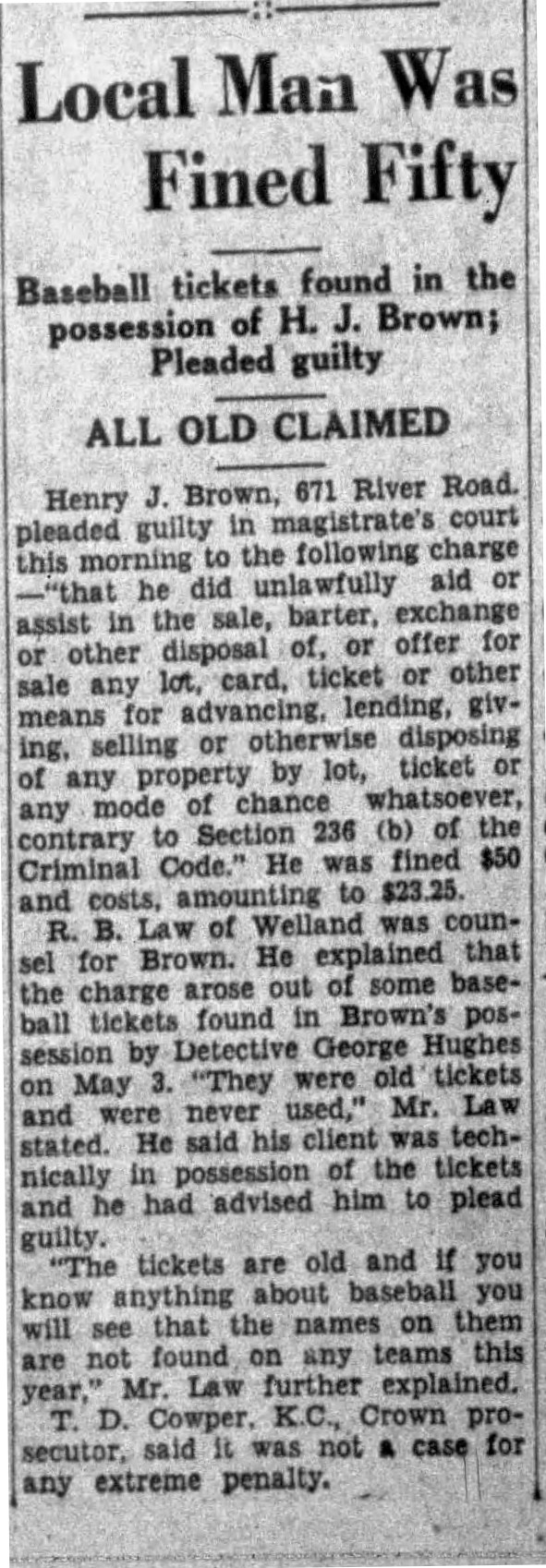
"Local Man Was Fined Fifty," Niagara Falls Review. May 8, 1934. Page 1.
---
Baseball tickets found in the possession of H. J. Brown; Pleaded guilty
----
ALL OLD CLAIMED
----
Henry J. Brown, 671 River Road, pleaded guilty in magistrate's court this morning to the following charge - "that he did unlawfully aid or assist in the sale, barter, exchange or other disposal of, or offer for sale any lot, card, ticket or other means for advancing, lending, giving, selling or otherwise disposing of any property by lot, ticket or any mode of chance whatsoever, contrary to Section 236 (b) of the Criminal Code." He was fined $50 and costs, amounting to $23.25.
R. B. Law of Welland was counsel for Brown. He explained that the charge arose out of some baseball tickets found in Brown's possession by Detective George Hughes on May 3. "They were old tickets and were never used," Mr. Law stated. He said his client was technically in possession of the tickets and he had advised him to plead guilty.
"The tickets are old and if you know anything about baseball you will see that the names on them are not found on any teams this year," Mr. Law further explained. T. D. Cowper, K.C., Crown prosecutor, said it was not a case for any extreme penalty.
#niagara falls#police court#illegal sale#baseball tickets#technical violation#criminal code of canada#long arm of the law#fines and costs#great depression in canada#crime and punishment in canada#history of crime and punishment in canada
0 notes
Text

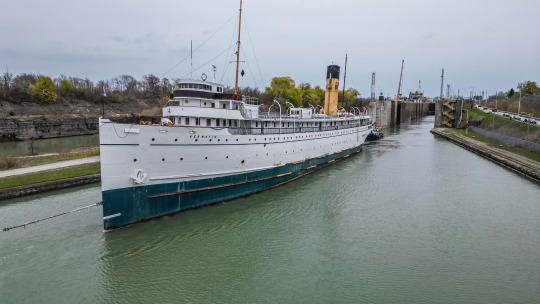
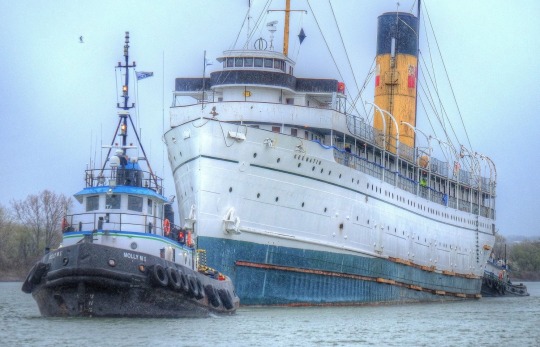

Today in Great Lakes shipping history. May 2nd.
Titanic-era steamer Keewatin tow arrives at Hamilton
HAMILTON, ON – The tow of the iconic, Edwardian-era passenger ship Keewatin reached Hamilton Saturday around 2 p.m. after passing through the Welland Canal on Friday. Spectators lined the Burlington piers to watch the stately vessel’s arrival. She was towed in by the McKeil Marine tug Molly M1.
Keewatin is bound for the Heddle Marine shipyard. After drydocking, she will be towed to her hew home in the transportation collection of the Maritime Museum of the Great Lakes at Kingston, ON.
The historic vessel was tugged out of Port McNicoll, ON, Monday afternoon, with hundreds of people lining the waterfront at Port Huron/Sarnia, Detroit/Windsor and at the Welland Canal to view the once-in-a-lifetime passage.
The Keewatin was built in Glasgow, Scotland and set out on her maiden voyage in September 1907, docking in Quebec. She spent nearly 60 years carrying passengers on the Great Lakes, often docking at Port McNicoll, Ontario. Port McNicoll was known as the “Chicago of the North” for some time until trains and ships stopped coming through in 1965 due to the completion of the Trans Canada Highway.
After coming out of service that same year, the Keewatin permanently docked in the Kalamazoo Harbor in Douglas in 1968, across from the summer resort town of Saugatuck.
The ship became a museum and sat in the harbor for more than 40 years, when it was towed out of the river back to Port McNicoll in June 2012. Her departure that summer was a big event, with large crowds gathering to see the historic ship make its way out of Saugatuck one last time.
The Keewatin is expected to arrive in Kingston sometime this fall.
Boat Nerd
#gordon lightfoot#shipping#great lakes#Edmund Fitzgerald#nautical#maritime#ore boat#tug boat#keewatin
9 notes
·
View notes
Text
Canada West's Last Frontier
Sydenham launched an unlimited expansion of the state equipment by way of the introduction of municipal authorities. Areas not already ruled by way of civic corporations or police boards can be ruled via centrally managed District Councils with authority over roads, faculties, and local policing. A strengthened Executive Council would additional usurp a lot of the elected meeting's legislative role, leaving elected politicians to easily review the administration's legislative program and budgets. Additional districts were created from the existing districts because the population grew until 1849, when local authorities mainly based on counties came into impact.
The Welland Canal Company obtained a loan of 50,000 pounds from the Province of Upper Canada in March 1831 to chop a canal on to Gravelly Bay as the new Lake Erie terminus for the canal. The Erie Canal, stretching from Buffalo to Albany, New York, threatened to divert the entire grain and other commerce on the upper Great Lakes by way of the Hudson River to New York city after its completion in 1825. Upper Canadians sought to build a similar system that would tie this commerce to the St Lawrence River and Montreal. Upper Canada was within the unenviable place of having few exports with which to pay for all its imported manufactured needs. In the last decade 1830–39, exports of wheat averaged lower than £1 per person a year (less than £6 per household), and in the 1820s simply half that.
Westward from Montreal, journey would proceed along the Ottawa River to Bytown , then southwest through the canal to Kingston and out into Lake Ontario. Because the Rideau Canal was easier to navigate than the St. Lawrence River because of the sequence of rapids between Montreal and Kingston, it became a busy commercial artery from Montreal to the Great Lakes. The construction of the canal was supervised by Lieutenant-Colonel John By of the Royal Engineers.
They were granted lands amounting to 21,638 acres , of which 15,048 acres had been drawn from the clergy reserves and other glebe heaps, whereas 6,950 acres were taken from odd Crown lands. A later go well with to have this action annulled was dismissed by the Court of Chancery of Upper Canada. Following the War of 1812, European settlers got here in growing numbers.
Between 1783 and 1812, fifteen land surrender treaties had been concluded in Upper Canada. These concerned one-time payments of money or goods to the Indigenous peoples. Some of the treaties spelled out designated reserve lands for the Indigenous peoples.
The space hardest hit – Kent – was the area the place Sir Francis Bond Head, later Lt. Governor of Upper Canada in 1836, was the Assistant Poor Law Commissioner. One of his jobs was to drive the unemployed into "Houses of Industry." In the last decade ending in 1837, the population of Upper Canada doubled, to 397,489, fed largely by erratic spurts of displaced paupers, the "surplus population" of the British Isles. Historian Rainer Baehre estimated that between 1831 and 1835 a bare minimal of one-fifth of all emigrants to the province arrived completely destitute, forwarded by their parishes in the United Kingdom. The pauper immigrants arriving in Toronto had been the excess agricultural employees and artisans whose growing ranks despatched the worth of parish-based poor relief in England spiralling; a financial disaster that generated frenetic public debate and the overhaul of the Poor Laws in 1834. "Assisted emigration," a second answer to the issue touted by the Parliamentary Under-Secretary in the Colonial Office, Robert Wilmot Horton, would take away them permanently from the parish poor rolls.
In 1815, he started his service as the primary Roman Catholic Bishop at St. Raphael's Church in the Highlands of Ontario. In 1819, he was appointed Vicar Apostolic of Upper Canada, which in 1826 was erected right into a suffragan bishopric of the Archdiocese of Quebec. Their elementary political allegiances have been all the time thought-about doubtful. By 1812, this had become acutely problematic since the American settlers outnumbered the original Loyalists by greater than ten to 1. Following the War of 1812, the colonial authorities under Lt. Governor Gore took lively steps to forestall Americans from swearing allegiance, thereby making them ineligible to obtain land grants.
canada west's last frontier a history of lambton
These developments have resulted in a model new heli skiing philosophy – it’s now not simply the professional threat takers and thrill seekers that get to step out of a helicopter and score the freshest powder. Though Patterson decided it was too risky a enterprise, Gmoser saw the potential of heli skiing, initially bringing paying visitors into the Bugaboo Mountains of British Columbia in search of untracked lines. With his fellow-minded shoppers, he wanted to discover a method to go that additional vertical mile in pursuit of more powder and higher snow in areas previously accessible solely by probably the most exhausting core ski mountaineers. Gmoser, an honorary member of the Alpine Club of Canada and recipient of the Order of Canada is finest identified for his position in commercializing heli skiing. But it wasn’t till some thirty years later that heli skiing grew to become what it's right now.
At that time, there were 20 districts; legislation to create a model new Kent District was by no means completed. Up until 1841, the district officials had been appointed by the lieutenant-governor, though usually with local enter. "Upper Canada" grew to become a political entity on 26 December 1791 with the Parliament of Great Britain's passage of the Constitutional Act of 1791. The act divided the Province of Quebec into Upper and Lower Canada, but did not yet specify official borders for Upper Canada.
When the native legislature ignored his call for an inquiry, he referred to as for a petition to the British Parliament. He organised township conferences, and a provincial convention – which the government considered dangerous and seditious. Gourlay was tried in December 1818 beneath the 1804 Sedition Act and jailed for eight months. The Legislative Council of Upper Canada was the upper home governing the province of Upper Canada. Although modelled after the British House of Lords, Upper Canada had no aristocracy. Members of the Legislative council, appointed for all times, formed the core of the oligarchic group, the Family Compact, that came to dominate government and economic system in the province.
#history of heli skiing canada#history of freestyle skiing#history of downhill skiing#history of skiing in canada#canada west's last frontier a history of lambton#history of skiing timeline
1 note
·
View note
Photo
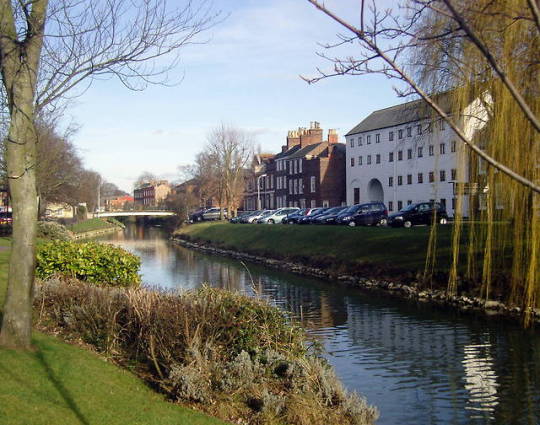
The River Welland at Spalding, Lincolnshire, England. X
2 notes
·
View notes